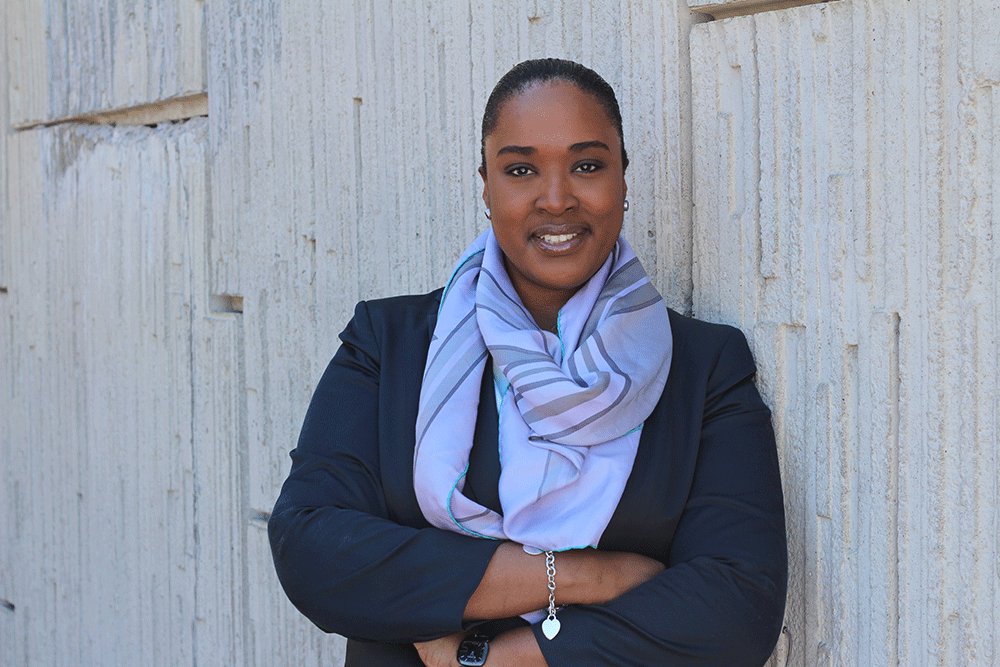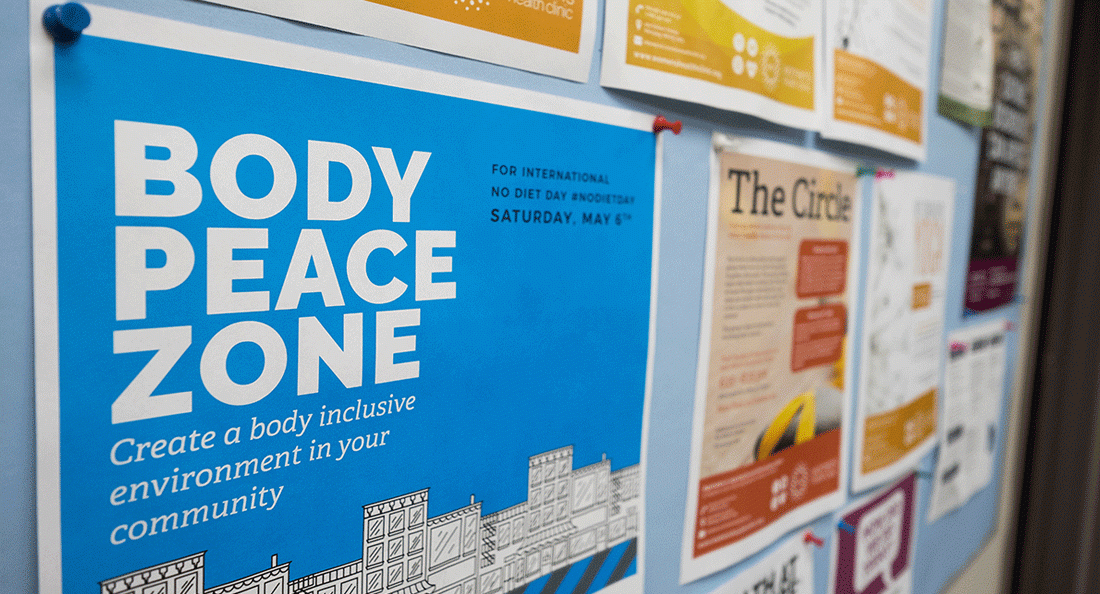Confronting weight stigma
Institutional sizeism affects Manitobans
In November of 2017, the Manitoba government rejected Bill 200, an amendment to the human rights bill that would protect the rights of Manitobans regardless of weight or size. The bill was rejected on the basis that it was too vague and would be difficult to implement without clearer guidelines.
Discrimination against a person’s weight or size, also known as sizeism, is an issue that affects many people in their day-to-day lives.
“There’s a big myth … that thinner is better,” Dr. Linda Bacon, researcher and author of Health At Every Size: The Surprising Truth About Your Weight, says.
Bacon explains that this common belief is paired with the notion that larger individuals have behaviours that are unhealthy and therefore wrong, whereas thinner people must lead healthier lives and be good.
“We know from a scientific perspective that that’s just not true, that you can’t judge somebody’s health (or) behaviours based on their size,” she says.
Jill Andrew, co-founder of Body Confidence Canada and creator of the National Campaign and hashtag #SizeismSUCKS (which has campaign leaders in several provinces, including Manitoba, Alberta, Saskatchewan and British Columbia) emphasizes that the size of a body does not define the person.
Jill Andrew is the co-founder of Body Confidence Canada and started the hashtag #sizeismSUCKS. (Supplied Photo)
“‘Fat’ is just a description. It’s not a prescription, and it’s certainly not an invitation for hate … and it sure as heck isn’t an excuse to make judgments about my health or my morality,” Andrew says in a TEDx Talk.
These assumptions occur in daily interactions, but also in the medical realm.
“I am a fat Black woman, and I cannot count the number of times I’ve been ‘diagnosed’ before any tests have been run, simply based on appearance,” Andrew says.
Andrew says that a complaint she once made to a doctor about her wrist pain was dismissed with the explanation that she had “meaty wrists,” a reasoning that failed to take any kind of medical examination into account.
The common belief that thinner is healthier is reinforced by the body-mass index (BMI), a measure of a person’s weight against their height that is used to determine if someone is in the “healthy” weight range for their height. It is now known to be a faulty system and can have harmful implications.
The science of weight
According to a Nutrition Journal article by Lucy Aphramor and Bacon, different bodies have different biological weight ranges. This means that despite the common rhetoric of weight loss, many individuals that are above what is accepted as the normal weight range are in fact leading healthy lifestyles.
Ann McConkey, a registered dietitian with the provincial Eating Disorder Prevention & Recovery Program, explains that weight is largely genetically determined.
“Our illusion that we have control is based on this short-term ability to change our weight temporarily,” she says.
McConkey says that people tend to see weight loss as success in society, and the individual is blamed for failure if their weight falls outside the range seen as acceptable.
As well, being thin is no longer the reality for most people. According to a 2014 survey by Statistics Canada, 40 per cent of men and 27.5 per cent of women are overweight, from a BMI standpoint. The body size that is touted as the norm is an unrealistic ideal that does not accurately represent the population.
Financial implications
Although over one-third of all Canadians are above the “normal” range of weight according to the BMI, it is more expensive for them to be so.
For instance, a life insurance policy might be more expensive, depending on whether the individual is established as being “at-risk.”
“When insurers underwrite an individual, we assess this extra mortality risk and may add extra premium cost for that risk,” Dr. Bruce Empringham, vice-president & medical director at Great-West Life, says.
Life insurance policies, such as those offered through Great-West Life,
may come with higher premiums based on BMI.
Empringham explains that Great-West Life relies on the BMI when determining a person’s policy. Great-West Life determines someone with a BMI over 30 kg/m2 (for instance, a person 5’11’’ tall weighing 220 lbs) as being at risk for complications including Type 2 diabetes, high blood pressure, heart disease, stroke, arthritis, cancer and sleep apnea.
“There can also be negative consequences for one’s mental health, such as depression, anxiety and eating disorders often associated with obesity,” Empringham says.
Empringham stresses that the underwriter will focus on details of any associated disease during the assessment of individuals with a high BMI. They do this in order to determine whether the person is an increased risk for something such as heart disease or diabetes.
“For those with a very high BMI, it can impact rates and coverage for life, critical illness (CI) and disability (DI) insurance to reflect the increase in mortality caused by the associated complications,” Empringham says.
However, these determining elements hinge on the BMI, which has been discredited as inaccurate, because although a higher body mass may indicate that a person is more at risk for certain diseases, there are many other influencing components.
According to a study from the University of Pennsylvania, elements such as bone density and muscle mass, as well as overall body composition and racial and sex differences, cannot be measured by the BMI. For instance, the BMI doesn’t take into account a measure of body fat or muscle, and female bodies tend to require more fat than male bodies.
Relying on the incomplete information of the BMI means that people of a certain size and weight range will continue to pay more to live in their bodies.
Workplace discrimination
Health At Every Size represents the belief that everybody deserves to be treated with respect in the workplace and have equal access to jobs and opportunities. However, the belief that thinness is healthy reinforces a system of inequality against larger people, where smaller bodies are rewarded for their size.
There are instances where this is transparent, because it is legal. For instance, certain companies have employee benefit programs where the discount or benefit is better if your BMI is in the “normal” range. For instance, Whole Foods gives employees within the “normal” BMI range a better discount.
The incentive is to have healthier employees, but Bacon sees this for what it is: discrimination.
“Fat people are victimized by the health argument,” Bacon says.
As well, many of these instances are prevalent but not provable. An employer might make the decision to refuse a front-office desk job to someone who is overweight, but they don’t have to explain that the person did not meet their standards of appearance.
Bacon is concerned with the daily sizeism that is most damaging to a person, including being exposed to advertisements promoting weight-loss programs or weight-loss-related employee benefit programs.
“Generally, this (is) stuff that’s saying that there’s something wrong with your body,” she says.
Accommodations in public spaces often reflect this social norm, with chairs and escalators that are too narrow for many body types.
“We need equipment in hospitals that are size-friendly, and this starts with chairs in waiting rooms that do not have arms,” Andrew says.
She explains that magazines and visual materials in waiting rooms reinforce what she calls the “thin epidemic,” the socio-cultural obsession with being thin, and are not size-inclusive.
Body positivity and activism in Manitoba
Lindsey Mazur is a registered dietitian with Manitobans Against Weight Stigma (MAWS). She explains that weight discrimination is common in the health-care setting, because of common misconceptions regarding size. She says that weight discrimination is an important human rights issue, because it has serious mental and physical health implications.
Lindsey Mazur is a dietitian with Manitobans Against Weight Stigma.
People who experience weight discrimination can often deal with microaggressions – they receive subtle (and not so subtle) messages telling them that there is something wrong with their bodies on a daily basis. This negative reinforcement can lead to issues with lower self-esteem, as well as eating disorders.
“Internalized weight stigma has an impact on our health as well as the external weight stigma discrimination,” she says.
According to a 2009 study in the Obesity research journal, people who view their bodies positively tend to be healthier than those who don’t, regardless of weight or size.
“I like to encourage folks to look at their bodies in terms of its function,” Mazur says.
She advises to focus on eating well and the way the body feels, good quality sleep and finding ways to move that are enjoyable.
Social factors and health care
Bacon explains that health care tends to rely on individual behaviour change: certain people are categorized as sick and must make changes in their own lives in order to become healthy.
She says focus on the individual is not conducive to solving what is ultimately a social issue.
“We know that the greatest source of chronic illnesses has to do with social factors, how people are treated in the world … if we deal with poverty, we’d be improving people’s health to a much greater degree than if we tell people to eat their veggies,” Bacon says.
She explains that while social factors probably account for a great part of the incidence of disease, this doesn’t show up in our practices. For instance, conditions of poverty tend to make it more difficult for people to be healthy, due to increased stressors.
According to The Canadian Facts, stressful conditions include dealing with “low income, poor quality housing, food insecurity, inadequate working conditions, insecure employment, and various forms of discrimination based on Aboriginal status, disability, gender, or race.”
Intersection of race and class
“It’s really important to realize that body-shaming and the body positivity movement isn’t just about body size,” Andrew says.
Andrew explains that recognizing intersectionality is key to dismantling institutional sizeism.
“We must be aware of the social determinants of health, inequality and the ways in which certain people – especially marginalized communities – do not have equal access to resources and how people are able (or not) to survive and thrive in their bodies,” she says.
Research done around the intersection of race, class and health reveals that social factors greatly influence a person’s overall weight. Bacon speaks specifically of racialized hypertension, for example.
“High blood pressure is a lot more common among People of Colour, and we can trace the physiological mechanisms through which the people face discrimination or daily microaggressions … changes the body physiologically,” she says.
These stressors result in higher levels of cortisol, which increases the risk for heart disease and diabetes. These are conditions that are commonly associated with weight.
Call to action

Signs in the Women's Health Clinic bathroom encourage body-positive thinking.
Mazur believes that one of the reasons the bill that would protect the rights of all Manitobans, regardless as to weight or size, wasn’t approved is due to a lack of understanding of weight discrimination in politics. She explains that a change in the laws would not only make certain acts illegal, but it would also help shift perceptions and change behaviours.
“It can literally save lives,” she says.
Andrew wants to change the stigma around the word “fat.” She suggests to reclaim it as a descriptor, without the negative connotations. This would mean people who identify as fat could use the word to describe the size of their bodies in a way that is useful, for instance, when shopping for clothing.
“We really cannot ignore the power of words. We cannot ignore the meanings that we’ve attached to words. They help define who we are,” she says. “If we don’t keep saying the word ‘fat,’ it’ll … remain vilified.”
Published in Volume 72, Number 17 of The Uniter (February 8, 2018)







